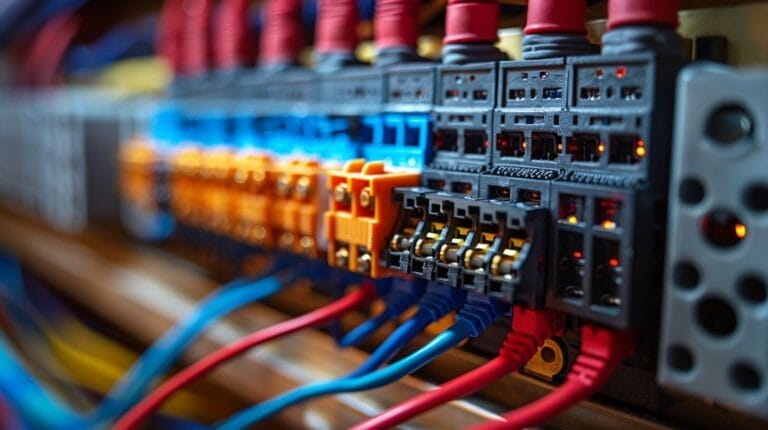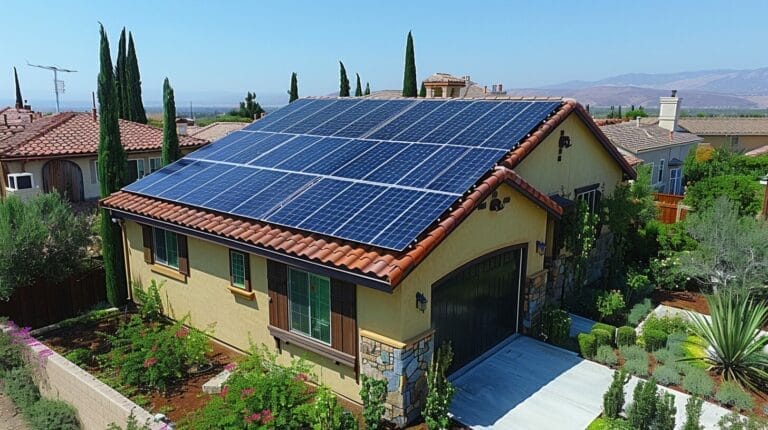What Are Harmonics in Electricity: A Quick Guide
When we talk about harmonics in electricity, we’re referring to distortions that creep into the otherwise smooth sinusoidal waveform of electrical signals. These distortions often stem from non-linear loads like computers and LED lighting. They can introduce unwanted frequency components that might disrupt the efficiency and performance of our electrical systems. But what exactly are these harmonics, and how do they impact our power quality?
Understanding these nuances is key to maintaining reliable and efficient electrical operations. Join us as we explore how measuring, analyzing, and addressing harmonic issues can make all the difference.
Key Takeaways
- Harmonics are distortions in electrical waveforms caused by non-linear loads.
- They can appear as odd, even, or triplen harmonics, with odd harmonics being the most common.
- Harmonics can lead to issues like overheating, equipment malfunction, and poor power quality.
- Total Harmonic Distortion (THD) is a key metric for measuring harmonic distortions.
- Addressing harmonics involves using filters, power factor correction units, and adhering to IEEE 519 standards.
Understanding the Concept of Harmonics in Electricity

Harmonics in electricity are distortions in the electrical waveform that result from nonlinear loads. As we go into the realm of electrical systems, we discover that harmonic currents deviate from the fundamental frequency, bringing forth a spectrum of challenges and opportunities. Non-linear loads, such as industrial machinery, variable frequency drives, and even contemporary electronic devices, are primarily responsible for these harmonic distortions.
The types of harmonics—odd, even, and triplen—are crucial to understand. Odd harmonics (3rd, 5th, 7th, etc.) are more prevalent and tend to cause the most severe issues in our electrical systems. Even harmonics (2nd, 4th, 6th, etc.), while less common, are still troublesome. Triplen harmonics, which are multiples of the third harmonic (3rd, 9th, 15th, etc.), often accumulate and create neutral current issues in three-phase power systems.
Recognizing how these harmonic currents interact with the fundamental frequency allows us to innovate and devise solutions to mitigate their impacts. By highlighting the role of non-linear loads in generating harmonics, we can concentrate our efforts on developing smarter, more efficient industrial systems that minimize these distortions and enhance overall performance.
The Impact of Power Harmonics on Electrical Systems

Power harmonics can significantly alter the performance and efficiency of our equipment. These distortions introduce unwanted frequencies into the power system, leading to various issues. The extra stress on electrical components can cause overheating and potential failure. As a result, the efficiency of our equipment decreases, and the overall system becomes less reliable.
Symptoms of harmonic distortion in our power system include:
- Overheating Transformers: Excessive heat can damage insulation and reduce lifespan.
- Malfunctioning Equipment: Sensitive devices may behave unpredictably or fail prematurely.
- Poor Power Quality: Fluctuations and noise in the power supply can disrupt operations.
- Increased Energy Costs: Inefficiencies lead to higher energy consumption and costs.
- Interference with Communications: Harmonics can cause noise in communication lines, affecting data integrity.
Measuring and Analyzing Harmonic Distortions Using Power Quality Analyzers

Power quality analyzers play a crucial role in detecting harmonic distortions. These devices provide real-time data on electrical signals, enabling us to pinpoint issues with precision. By measuring parameters like Total Harmonic Distortion (THD), we can assess the extent of harmonic distortions affecting our systems.
Power quality analyzers allow us to identify and quantify THD, which is essential for maintaining the efficiency and reliability of our electrical systems. They measure voltage and current waveforms, isolating harmonic components that deviate from the fundamental frequency. This crucial measurement is key for diagnosing and troubleshooting power quality issues.
Additionally, these analyzers help us understand phenomena like flicker, often linked to harmonic distortions. Flicker can cause visible fluctuations in lighting, disrupting operations, and reducing the lifespan of electrical equipment. By analyzing data from power quality analyzers, we can correlate flicker with specific harmonic frequencies, enabling targeted interventions.
Addressing Harmonic Issues: Standards and Solutions

Addressing the harmonic distortions identified by our power quality analyzers involves adhering to established standards like IEEE 519 and implementing effective solutions. The IEEE 519 Standard provides guidelines for harmonic control, ensuring that harmonic levels remain within acceptable limits to protect our electrical systems and enhance efficiency.
Active harmonic filters are among the innovative solutions we can employ. These devices dynamically adjust to varying harmonic loads, providing real-time mitigation and improving overall power quality. Moreover, integrating power factor correction units can help reduce the reactive power in our systems, further minimizing harmonic issues.
Several mitigation techniques are available, including filters, reactors, and converters, each offering unique benefits in different scenarios. By leveraging these technologies, we not only comply with the IEEE 519 Standard but also push the boundaries of what’s possible in harmonic control.
Here’s why we should care:
- Enhanced system reliability
- Reduced operational costs
- Prolonged equipment lifespan
- Improved energy efficiency
- Compliance with industry standards
Effect of Harmonics on Temperature Fluctuations in Electrical Systems

Over time, harmonics can cause significant temperature fluctuations in electrical systems, leading to overheating and potential equipment failure. Harmonics distort the ideal sinusoidal wave, causing an increased current flow in the system. This excess current generates additional heat in transformers, motors, and other electrical equipment.
When harmonics are present, they exacerbate the heating effect due to the increased RMS (root mean square) value of the current. Equipment like transformers and capacitors can suffer from insulation breakdown and reduced lifespan due to these temperature fluctuations. As we innovate and integrate more sophisticated electrical systems, understanding and mitigating the effects of harmonics becomes vital to maintaining system reliability and efficiency.
To illustrate the impact of harmonics on temperature fluctuations and overall system health, consider the following:
| Harmonic Effect | Temperature Impact | Potential Consequence |
|---|---|---|
| Increased RMS Current | Higher Operating Temp | Insulation Breakdown |
| Distorted Waveforms | Fluctuating Heat Levels | Reduced Equipment Lifespan |
| Excessive Heating | Overheating | System Failures, Downtime |
Conclusion
In understanding harmonics, we’ve seen how they distort electrical signals and impact system performance. We’ve also explored how to measure these distortions and address them using standards and solutions.
By managing harmonics effectively, we can improve power quality, prevent equipment damage, and maintain reliable electrical systems. Let’s stay proactive in tackling harmonic issues to uphold high performance and efficiency in our electrical infrastructure.
Frequently Asked Questions
What are harmonics in electricity?
Harmonics in electricity are multiples of the fundamental power frequency, usually at 60 Hz. They are caused by non-linear loads drawing current from the electrical network.
What is total harmonic distortion?
Total harmonic distortion is a term used to describe the level of harmonics present in an electrical system. It is a measure of how much the waveform deviates from a perfect sinusoidal shape due to harmonics.
How do harmonics in electrical systems cause problems?
Harmonics can cause problems in electrical systems by creating additional heat, damaging equipment, leading to inefficiencies, and causing interference with other devices in the network.
What is the IEEE 519 standard?
The IEEE 519 standard sets limits on the levels of harmonics that can be introduced into an electrical system. It provides guidelines for maintaining power quality and reducing the negative effects of harmonics.
What are some examples of non-linear loads that draw current and create harmonics?
Non-linear loads such as electronic equipment, inverter drives, modern industrial machinery, and other electronic devices draw non-sinusoidal current from the electrical network, leading to harmonic distortion.







